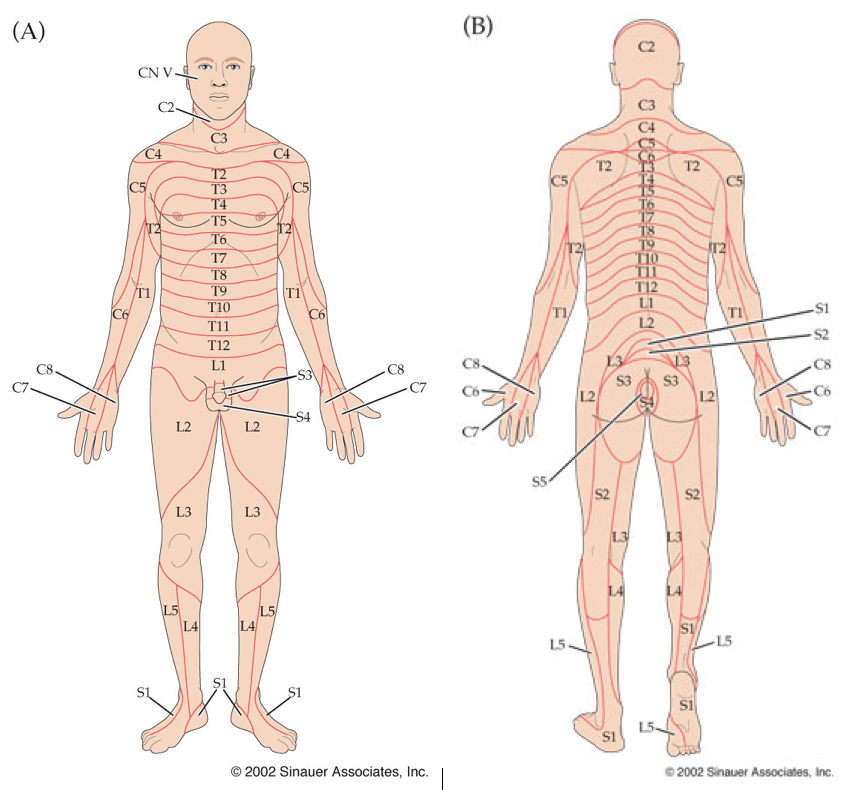Sensory Exam
Dermatomes

- A dermatome is an area of skin that is served by a single spinal nerve
- Dermatome maps like the one above vary somewhat from one text to another, likely due to differences in testing methods and individual variations.
- Familiarity with the dermatomes is clinically useful in localizing the lesion to a nerve root or spinal cord
- You should have a good feel for the dermatomes in the arms and legs and know that for the chest/abdomen, the nipple line is ~T4 and the umbilicus is ~ T 10 (and you can “guess-timate” for the rest)
- In spinal cord lesions, it is important to look for a sensory level (dermatome level)
- Start from the abnormal and move up the chest or back on either side with a pin or cold tuning fork until you reach normal sensation. You can also check vibration along the vertebrae as well.
- The sensory level is typically 2-3 levels below the lesion
- It is important to know the dermatomes if you are trying to figure out if the problem is due to a radiculopathy (root compression)
- Roots commonly compressed from herniated discs include L5 and S1 and less commonly C6 and C7.
- The most common presentation of this is sharp, shooting pain along the course of the dermatome served by the affected spinal nerve
- Damage to a single nerve root, even when severe, usually does not have any sensory loss because of the striking overlap of dermatomal sensory distribution
- There may be slight loss, often accompanied with paresthesias (tingling or pins and needles) in small areas of the distal limbs where the sensory overlap is not great.